Disclaimer: This post may contain Amazon affiliate links. Sudachi earns a small percentage from qualifying purchases at no extra cost to you. See disclaimer for more info.
Featured Comment:
“I loved the seasoned hamburger, it was a big hit at New Years.”
– Windsofchange (from Pineterest)
What is Korokke (Japanese Croquette)?
Korokke is a Japanese Yoshoku (Western-influenced) dish made with mashed boiled potatoes rolled into a bale or oval shape, coated with flour, eggs, breadcrumbs, and deep-fried in oil.
You can buy korokke anywhere, from supermarkets and convenience stores to butchers. They can also be bought pre-cooked, ready-to-eat, or frozen to cook at home.
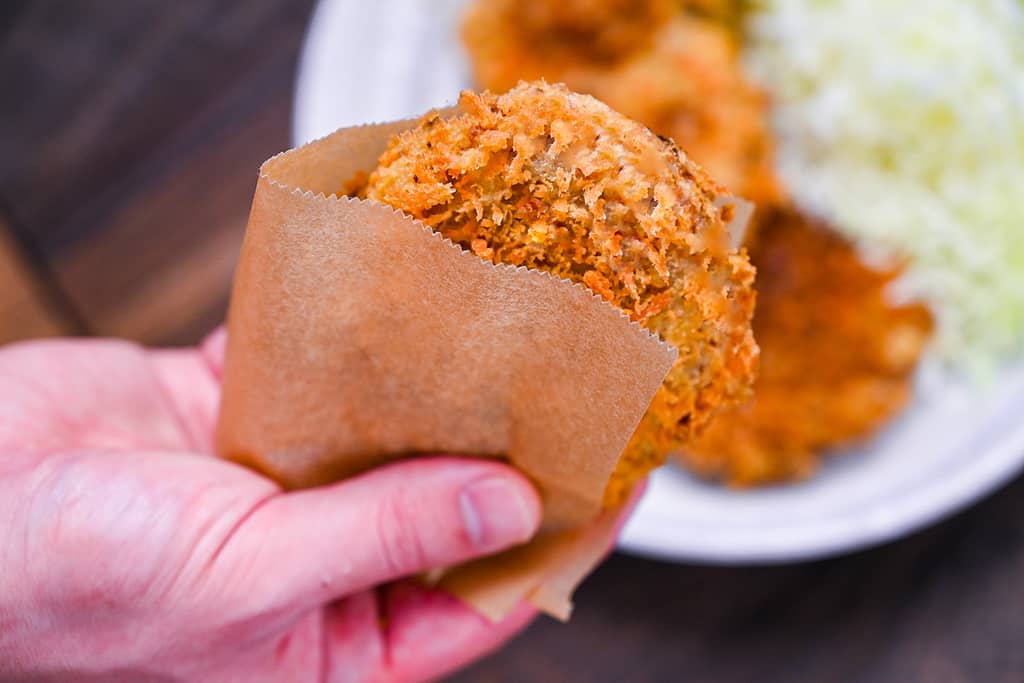
The word “korokke” is a loanword from either the French word “croquette” or the Dutch word “Kroket,” reflecting the dish’s international influences.
While the exact origin of korokke is uncertain, it is believed to have been created by a chef who combined his knowledge of Dutch cuisine and tempura cooking methods to develop the recipe. The dish first appeared in cookbooks and restaurants during the Meiji period (1868-1912), when Western cuisine became more popular in Japan.
Korokke’s Dutch origins may be due to the long trade history between the Netherlands and Japan. However, many yoshoku dishes in Japan are also influenced by French cuisine, so korokke may also have French roots.
Despite its origins, Korokke has been enjoyed in Japan since the early days of Western food’s influence on Japanese cuisine.

How I Developed This Recipe
From the moment I decided to make this Korokke recipe, my goal was clear: It was to recreate the cheap and delicious croquettes that were sold at the good old butcher when I was a kid.
In today’s world, supermarkets seem to have taken over, offering everything under one roof. But in Japan, local butcher shops were more than just places to buy fresh meat. They were also serving up freshly fried food like croquettes and tonkatsu.
In my experience, there’s something magical about those flavors from the past, the ones that transport you back in time. And that’s what I aimed to capture with this recipe.
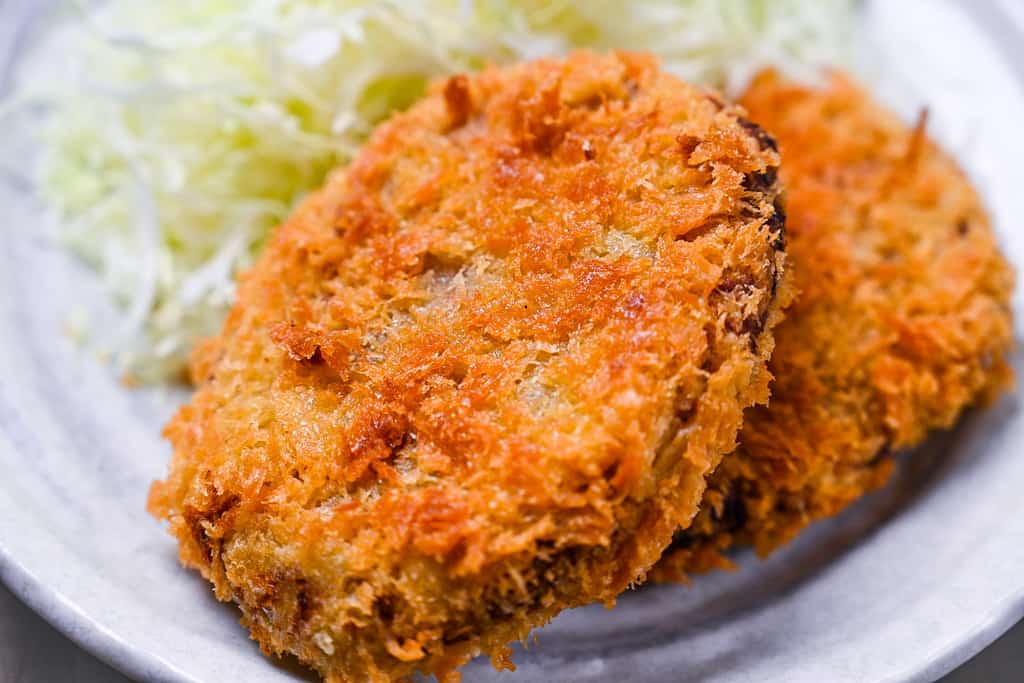
Ingredients & Substitution Ideas
- Potatoes: Starchy potatoes are my top pick for Korokke. They give that soft, fluffy texture that’s just irresistible.
- Unsalted Butter: I always stick to unsalted butter. If you’re tempted to use salted butter, remember to cut back on other salty ingredients to balance the flavors.
- Yellow Onion: While yellow onions are a staple in Japan, white onions are a good substitute.
- Ground Beef: While ground beef is my favorite, a mix of beef and pork works too. Just a heads up, I’d steer clear of ground chicken or turkey for this dish.
- Nutmeg: A pinch of nutmeg masks the meaty odor and enhances its natural flavors.
- Soy Sauce: For an affordable option, I recommend Kikkoman soy sauce. For a deeper dive into selecting the perfect soy sauce for Japanese dishes, refer to my comprehensive soy sauce guide.
- Sugar: Your regular sugar works just fine. But lately, I’ve been leaning towards light brown cane sugar for most recipes.
- Mirin: Shopping for mirin? “Hon mirin” (本みりん) is the gold standard. Hinode Hon Mirin is both top-notch and budget-friendly. For more on Japanese condiments, don’t miss my post on essential condiments.
- Whole Milk: If possible, I recommend making this recipe with whole milk rather than skim milk.
- Worcestershire Sauce: A must-have for serving.
- Batter Ingredients: My go-to batter mix includes cold water, egg, all-purpose flour, and panko bread crumbs. And speaking of panko, making it at home is a breeze! Check out my homemade panko breadcrumb guide.
Curious about the exact brands and products that bring my recipes to life? Discover the brands and ingredients behind my recipes at the Sudachi Amazon Storefront. Explore my handpicked pantry essentials and find your next kitchen favorites!
Jump to Full Recipe Measurements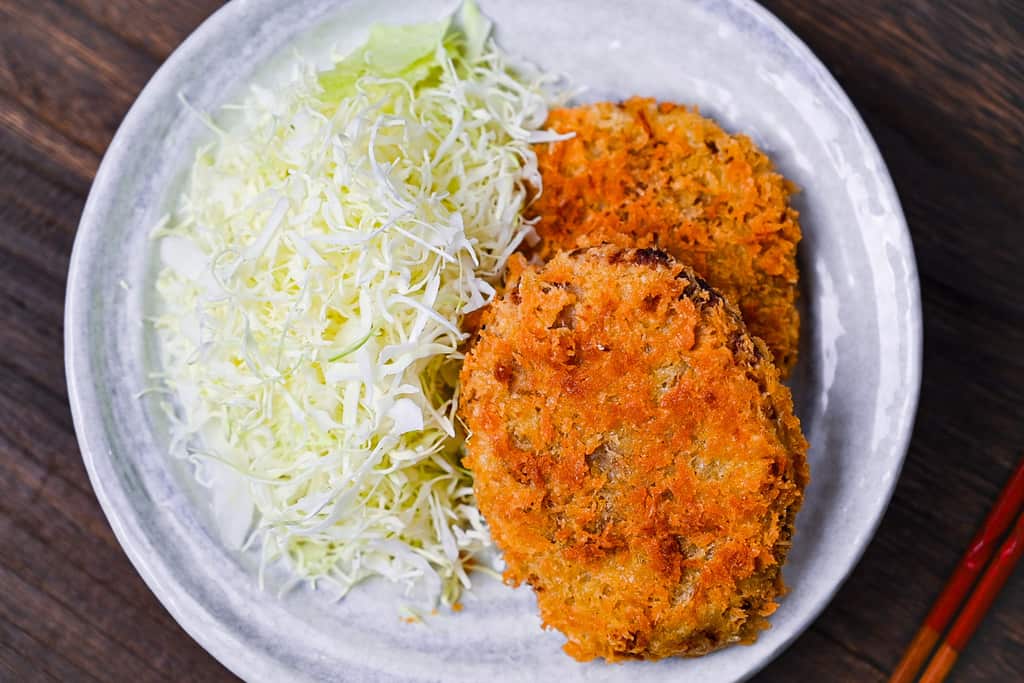
Visual Walkthrough & Tips
Here are my step-by-step instructions for how to make Japanese Korokke at home. For ingredient quantities and simplified instructions, scroll down for the Printable Recipe Card below.
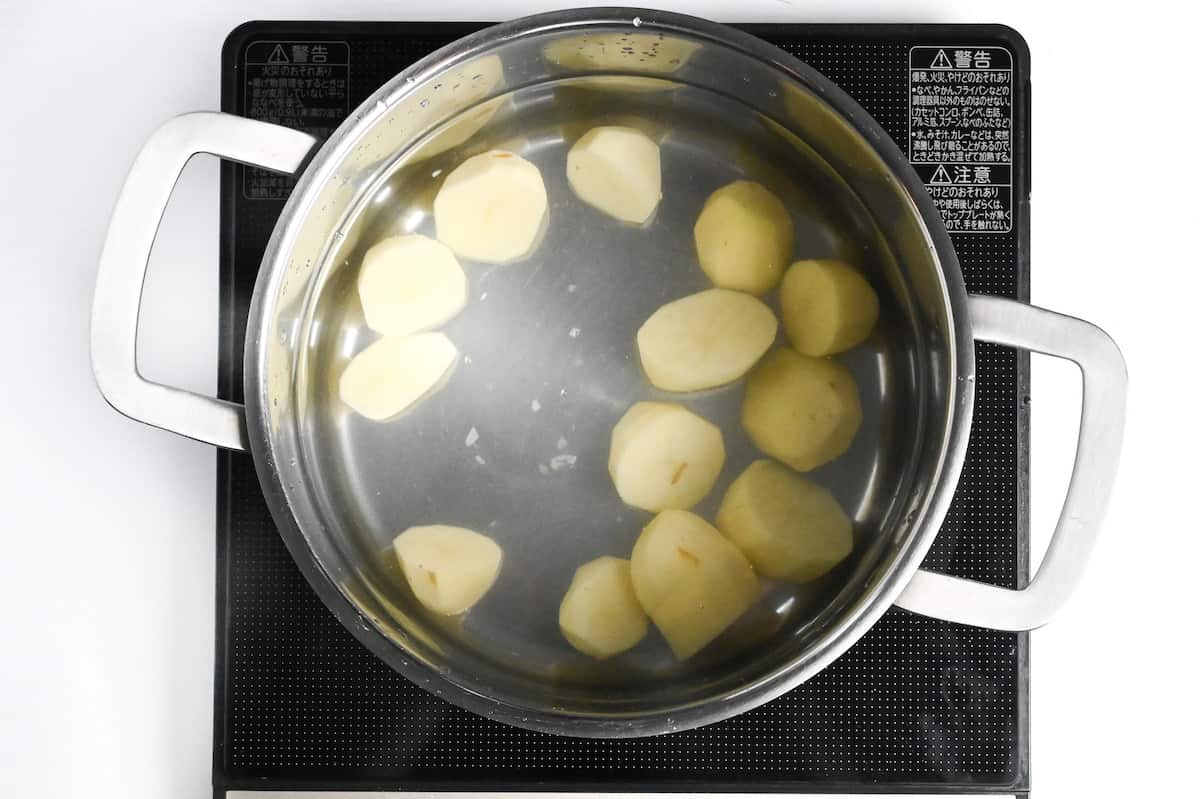
Cut potatoes into roughly equal-sized chunks. This ensures they cook evenly. Place them in a pot filled with cold water with some salt.
Starting with cold water and gradually bringing the potatoes to a boil ensures that they cook evenly from the inside out. This method helps achieve a consistent texture throughout the potato, making it ideal for mashing.
It’s a small step that makes a big difference in the end result.
Once it starts boiling, reduce the heat to medium. Let them simmer until soft enough that a fork slides right through.
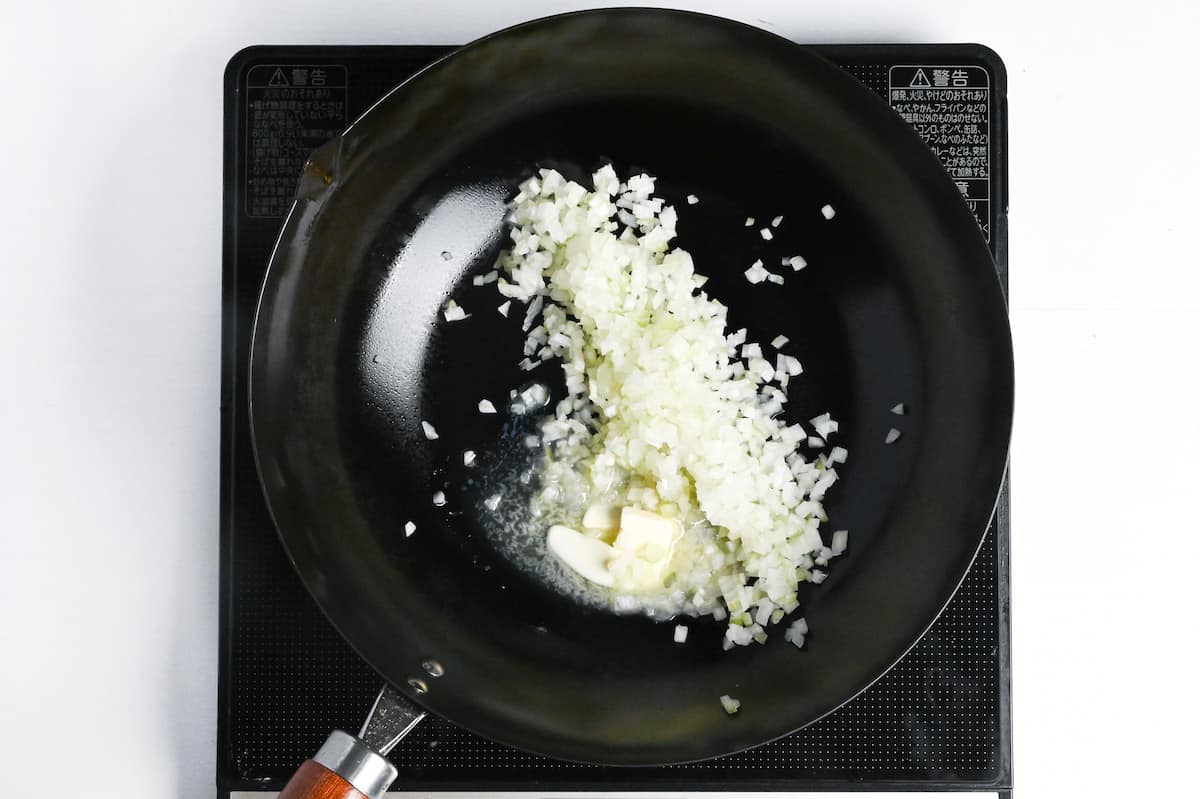
Grab a frying pan while those potatoes are getting all soft and tender. Heat it over medium heat and toss in the unsalted butter.
Once it’s all melted and bubbly, add in onions. Cook them until they’re soft and have a slightly see-through look. But be careful not to let them brown.
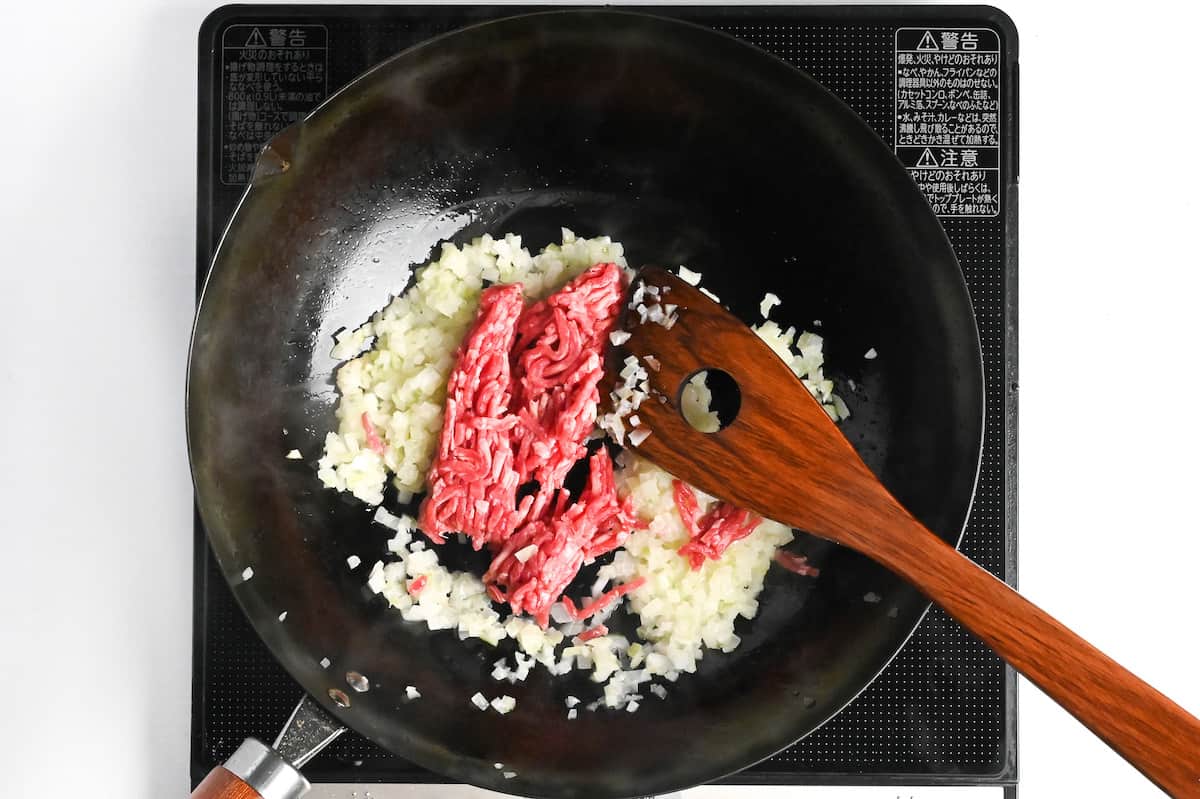
Now, stir in ground beef. Fry it up until there’s no pink left.
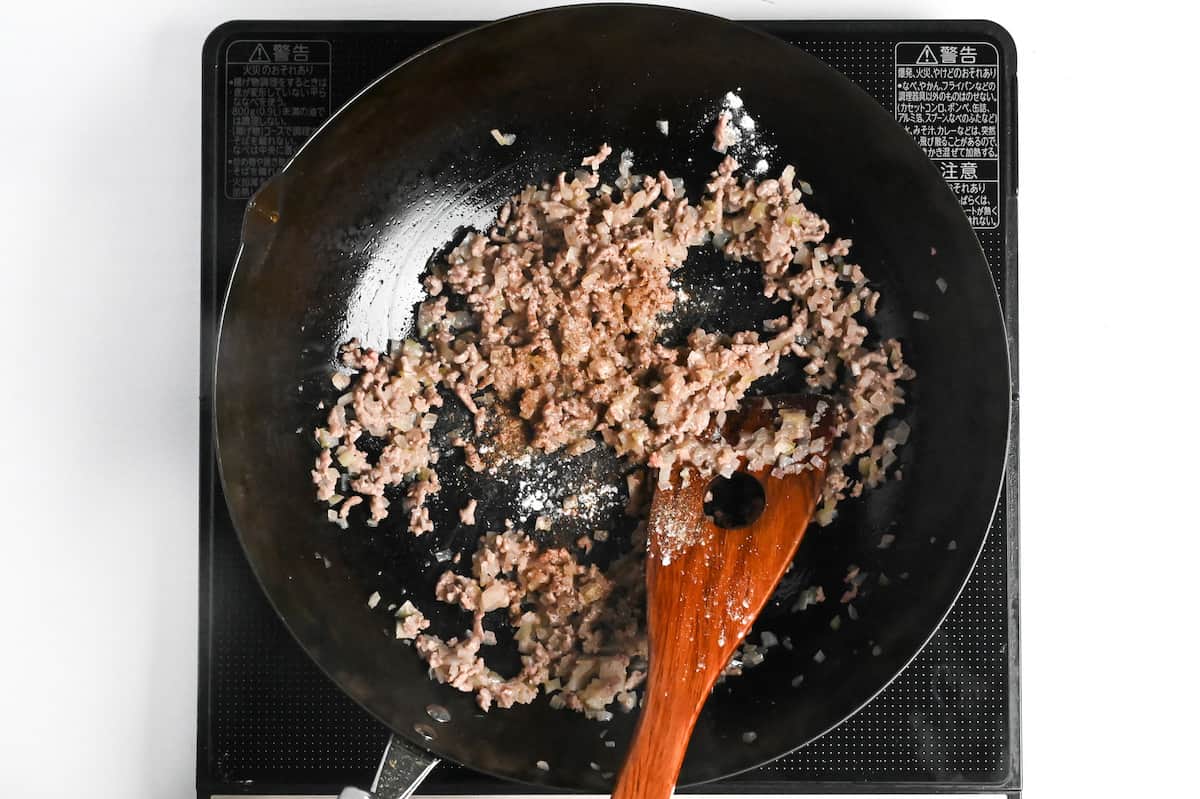
Sprinkle in a pinch of salt, pepper, and nutmeg. Give it a good mix. Then, pour in soy sauce, sugar, and mirin.
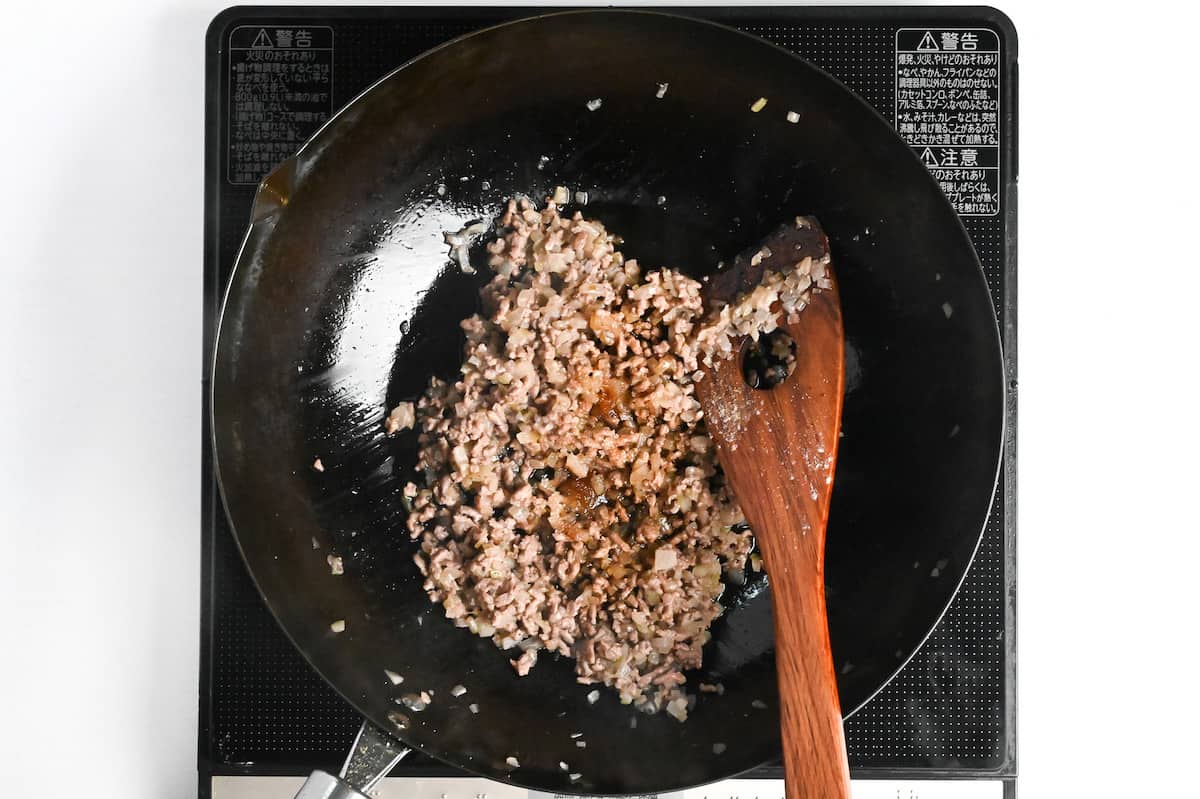
Keep frying until the beef soaks up all that flavorful liquid. Once done, turn off the heat and let it cool.
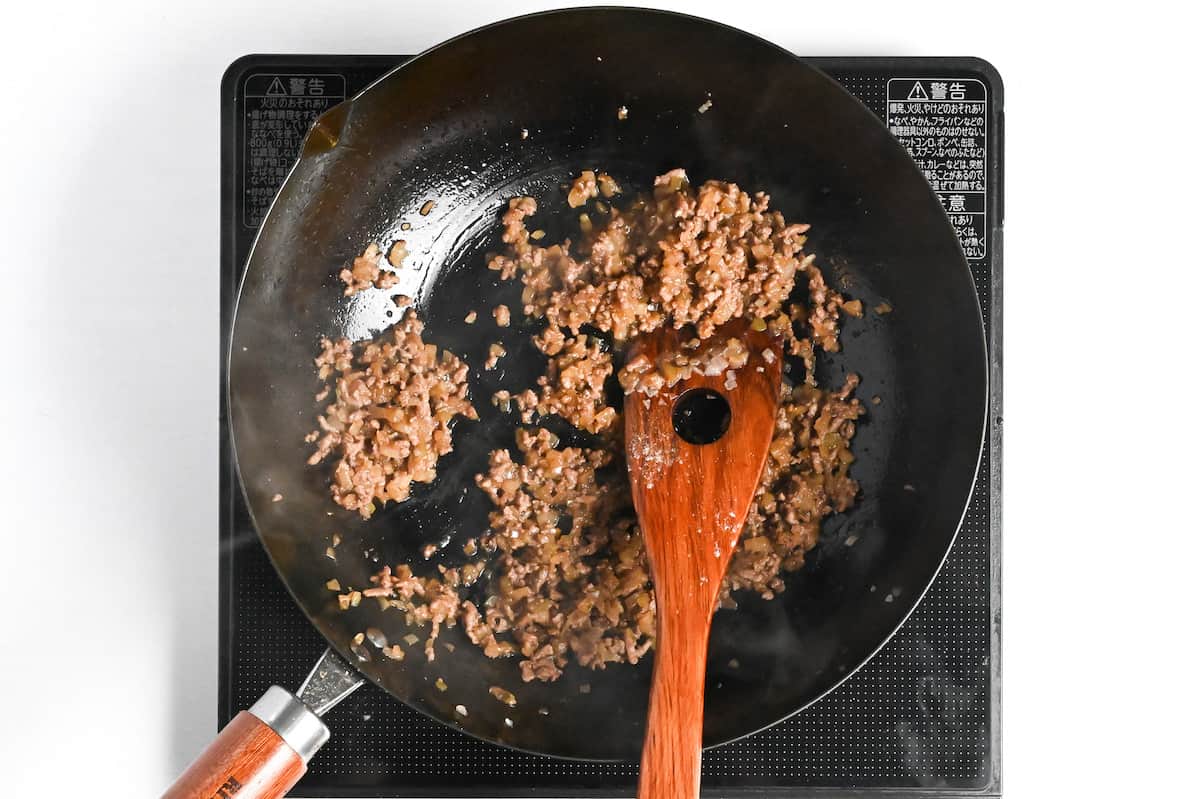
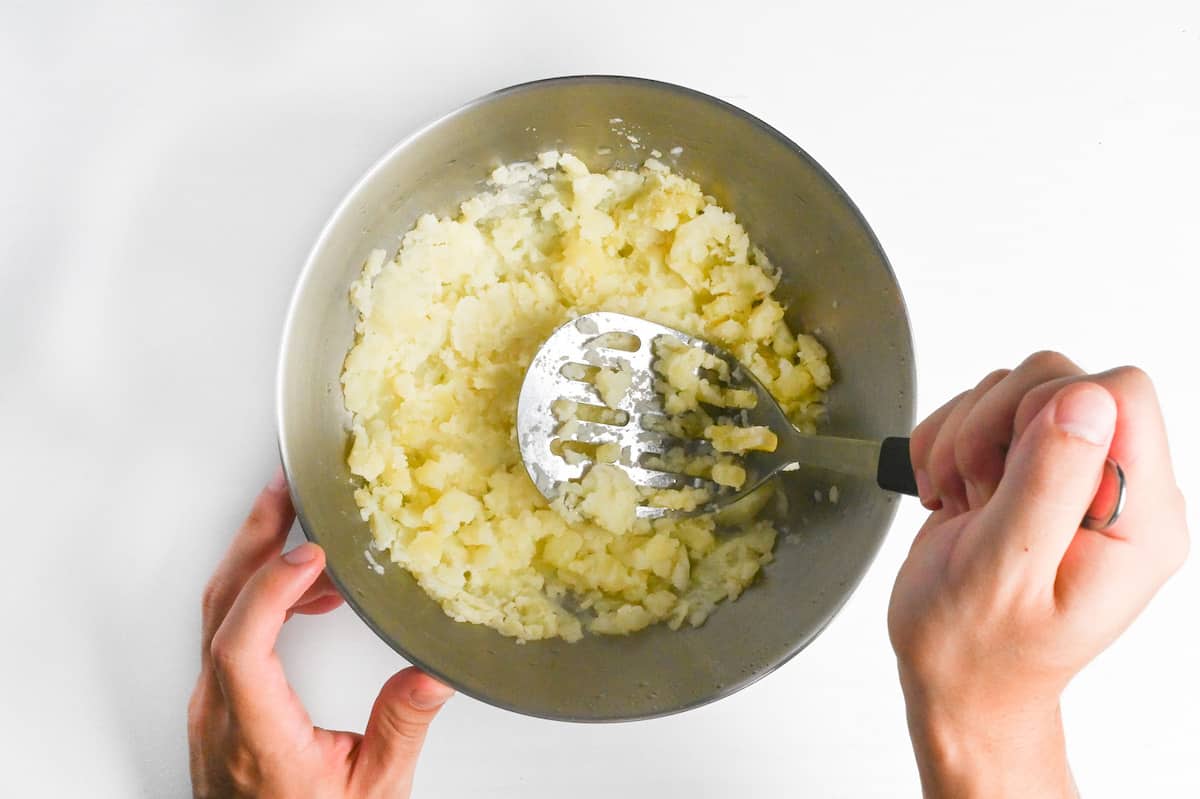
Transfer those cooked potatoes to a large bowl. Mash them up with a bit of whole milk. In my experience, this gives them an extra creamy texture and makes them easier to shape. If you find the mash is not smooth, feel free to add more milk a little at a time.
I recommend mashing potatoes while they’re still hot due to the starch content for better texture. It’s best to mash them immediately after boiling and reheating them if they cool down.
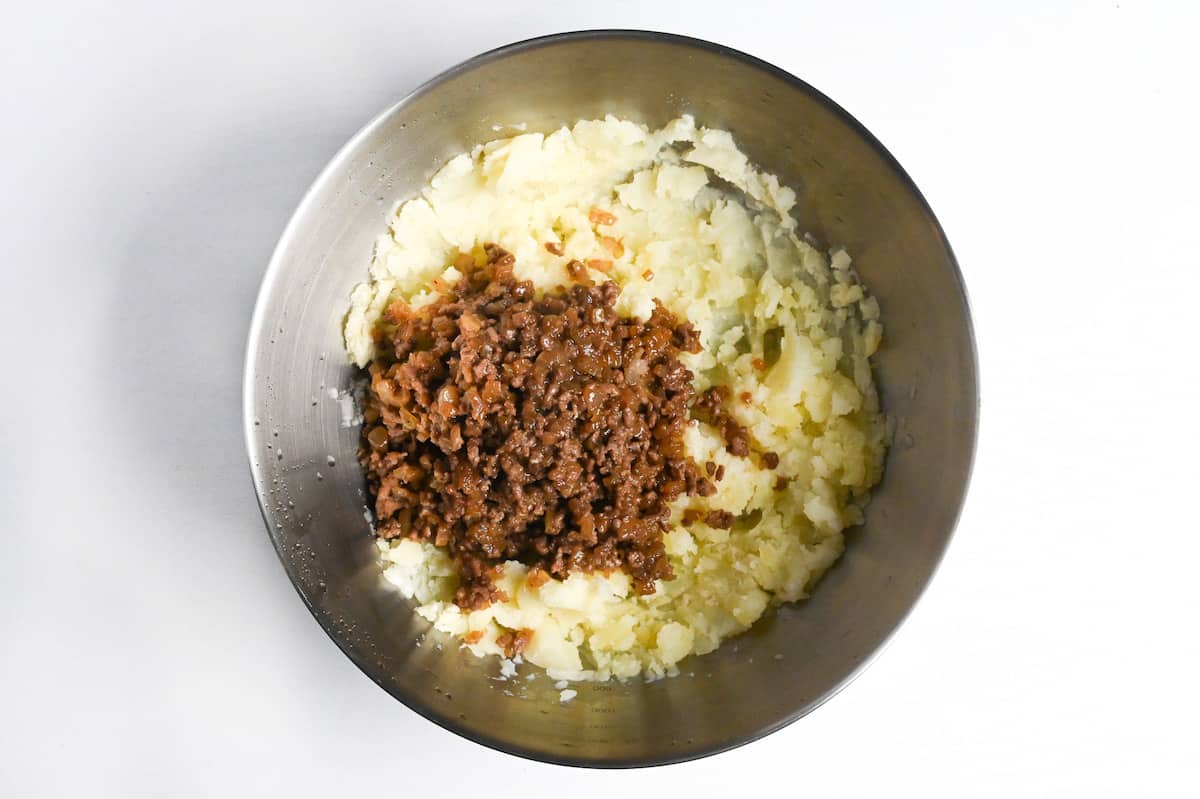
Once you’ve got a smooth mash, mix in the beef. Make sure everything’s well combined.
Ensure moisture is minimized to avoid a wet filling that could burst during frying. For example, drain potatoes and let them steam over a hot pan with the stove turned off to reduce water content. Thoroughly fry onions and meat to release moisture and fat. Before mixing your korokke filling, spread out cooked ingredients to let any remaining moisture evaporate.
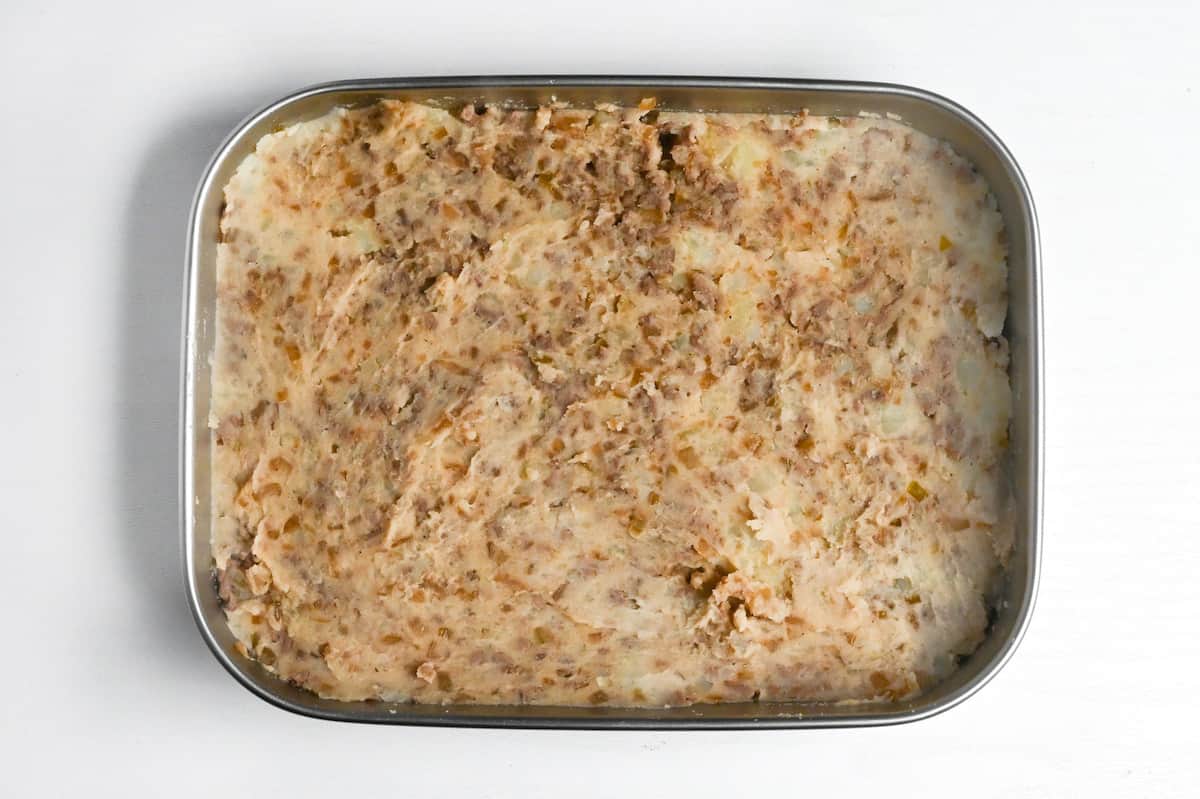
Spread the mixture into a wide container. Let it cool down until it’s comfortable to touch.
The purpose of cooling the ingredients is not only to evaporate the water but also to prevent the ingredients from rising in temperature and expanding before the batter is fried.
I recommend to chill in the refrigerator before frying. If you’re in a hurry, a short time in the freezer is also good.
Begin by heating your oil to 180°C/356°F in a deep frying pot. For a perfect golden and crispy coating, it’s important to fry quickly at a temperature between 170 and 180 degrees Celsius (approximately 340-360 degrees Fahrenheit).
Frying at a lower temperature results in a soggy texture on the outside and greasy on the inside, taking a long time.
Since the inside is already cooked, cooking it again when frying in oil is unnecessary. All that’s required is to heat it through and crisp up the outside.
To avoid failure when frying Korokke, I recommend using more oil. Shallow frying can cause the filling to explode as the parts sticking out of the oil only warm up instead of cooking. This can make them unstable and leak out once turned over. Therefore, it’s safer to deep fry korokke to reduce the risk of this happening.
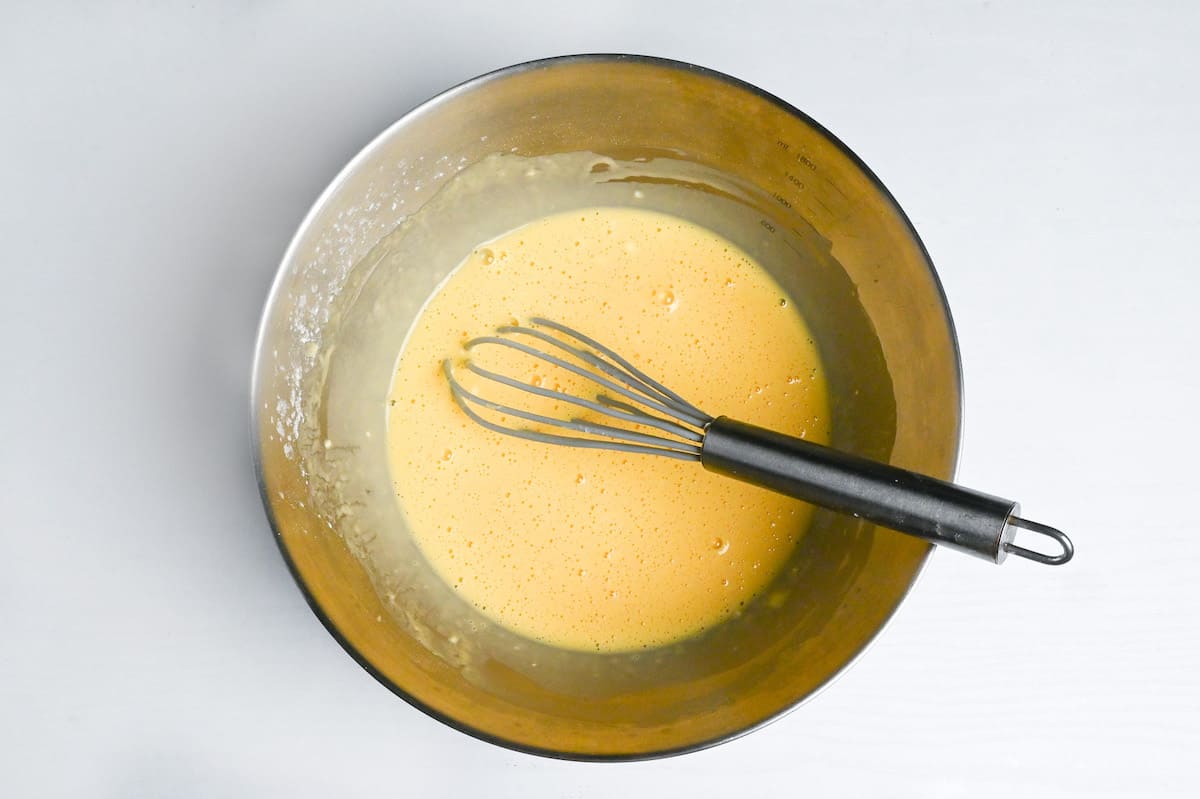
While the oil is heating, let’s prepare the batter. Whisk together cold water, egg, and all-purpose flour in a mixing bowl. Ensure it’s smooth and lump-free.
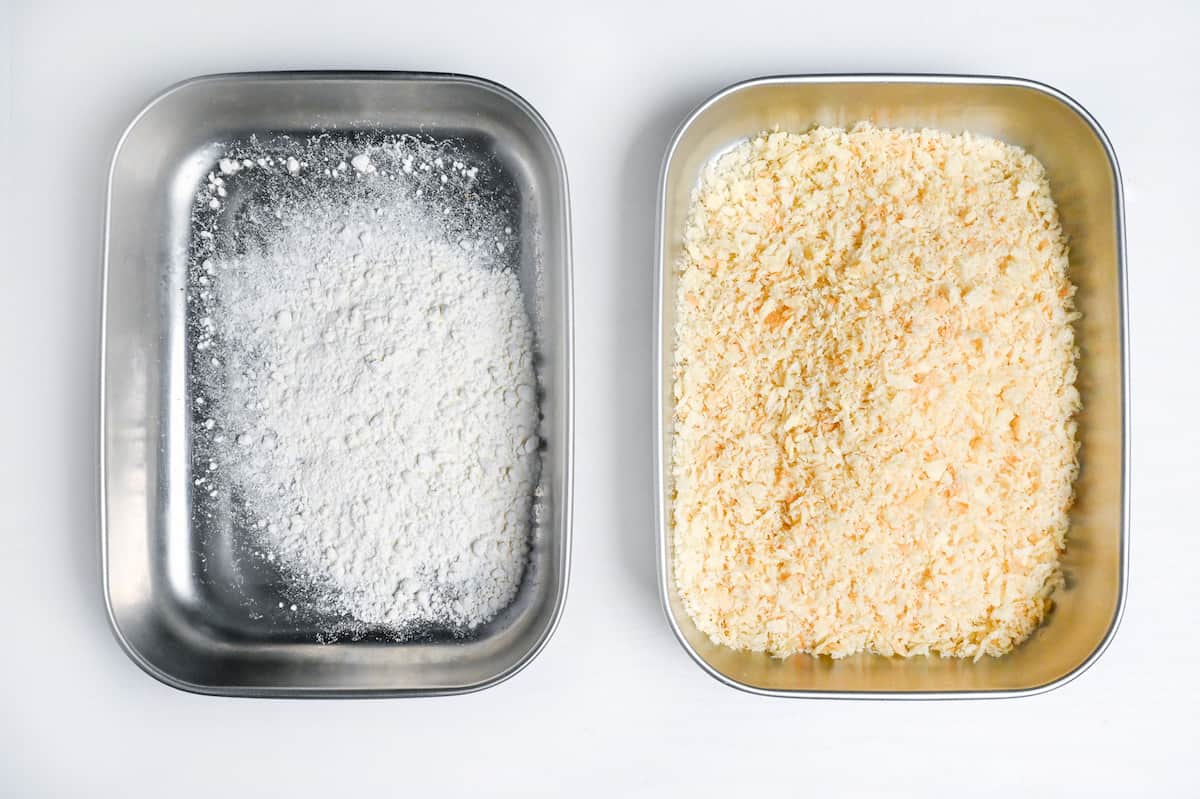
Lay out two plates side by side. On one plate, spread out some plain flour. On the other, spread your panko breadcrumbs.

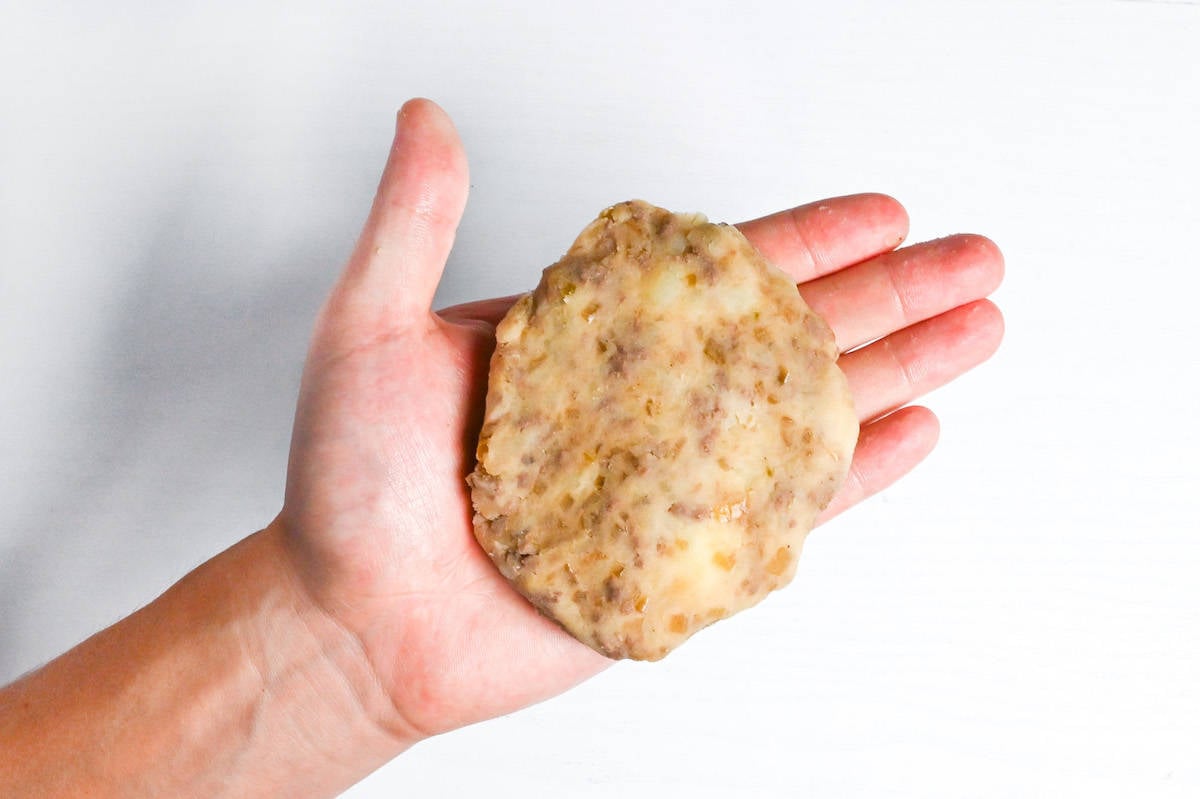
Take the filling out of the fridge. Divide it into 4-6 even portions. Shape each portion into a flat oval. This traditional shape ensures even cooking.
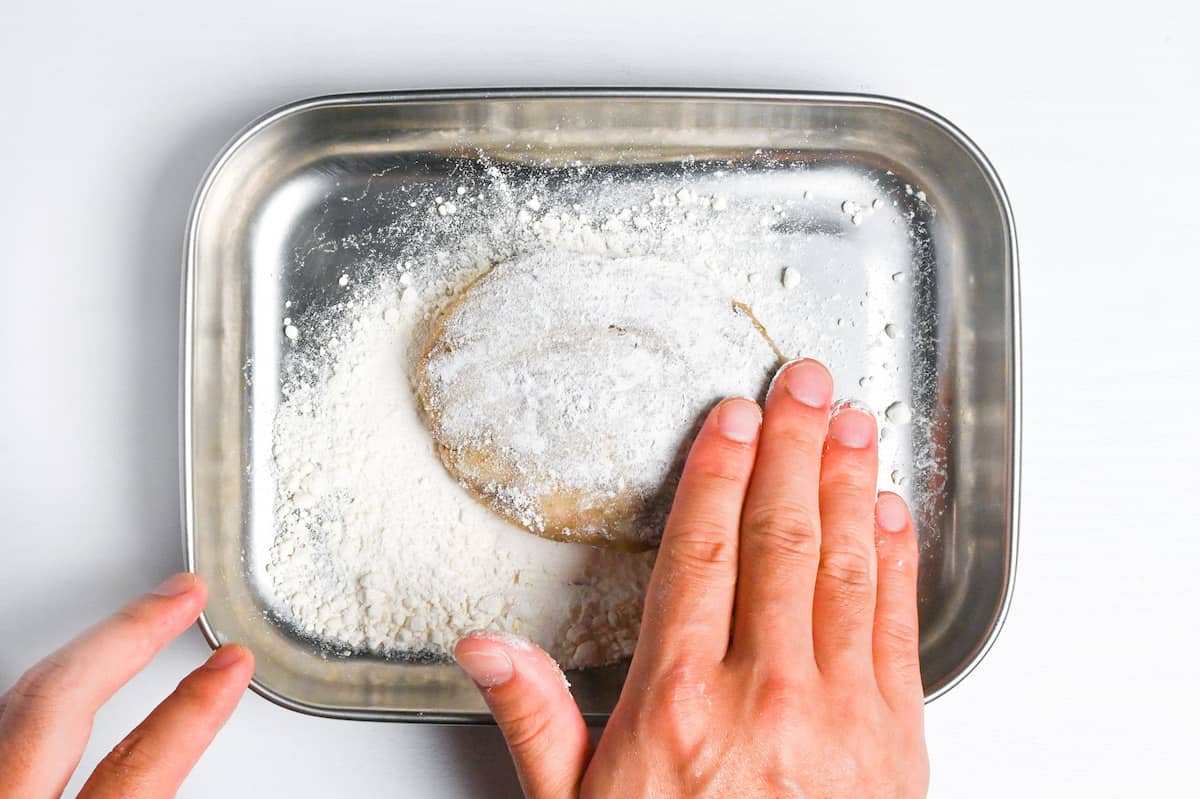
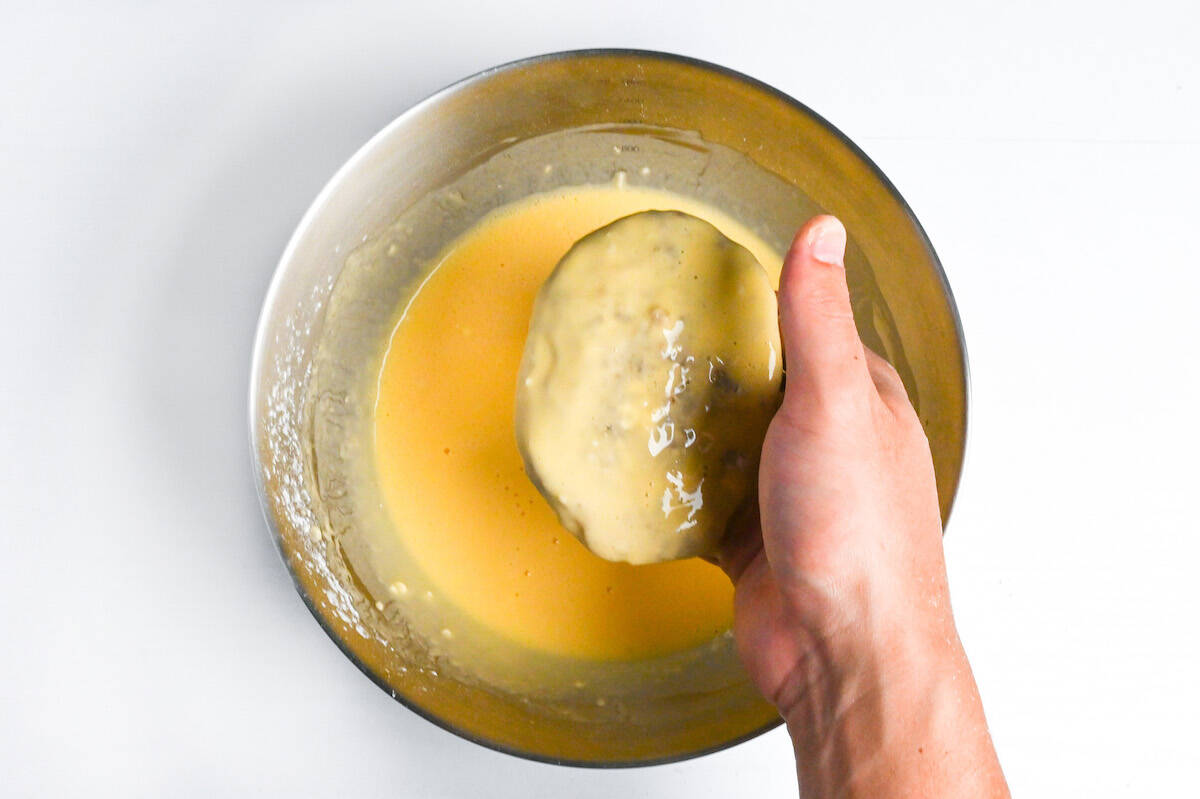
Here’s the fun (and messy) part! First, roll each korokke in the plain flour, ensuring it’s lightly but completely coated. Dip it into the egg batter next, letting any excess drip off.
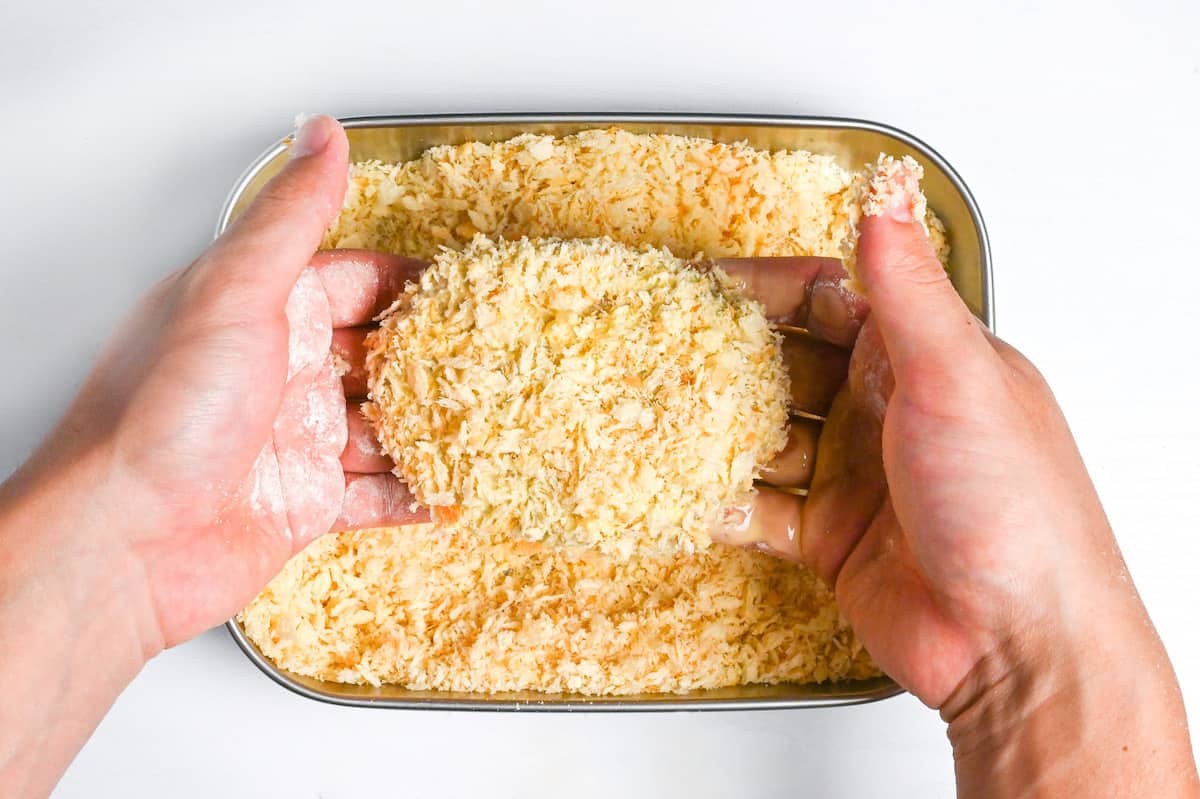
Finally, give it a generous coating of panko breadcrumbs. Press lightly to make sure the breadcrumbs adhere well.
If the batter and panko are not evenly distributed, some parts may overcook while others remain uncooked. So, I used my homemade batter mixture instead of separate flour and egg to ensure an even coating.
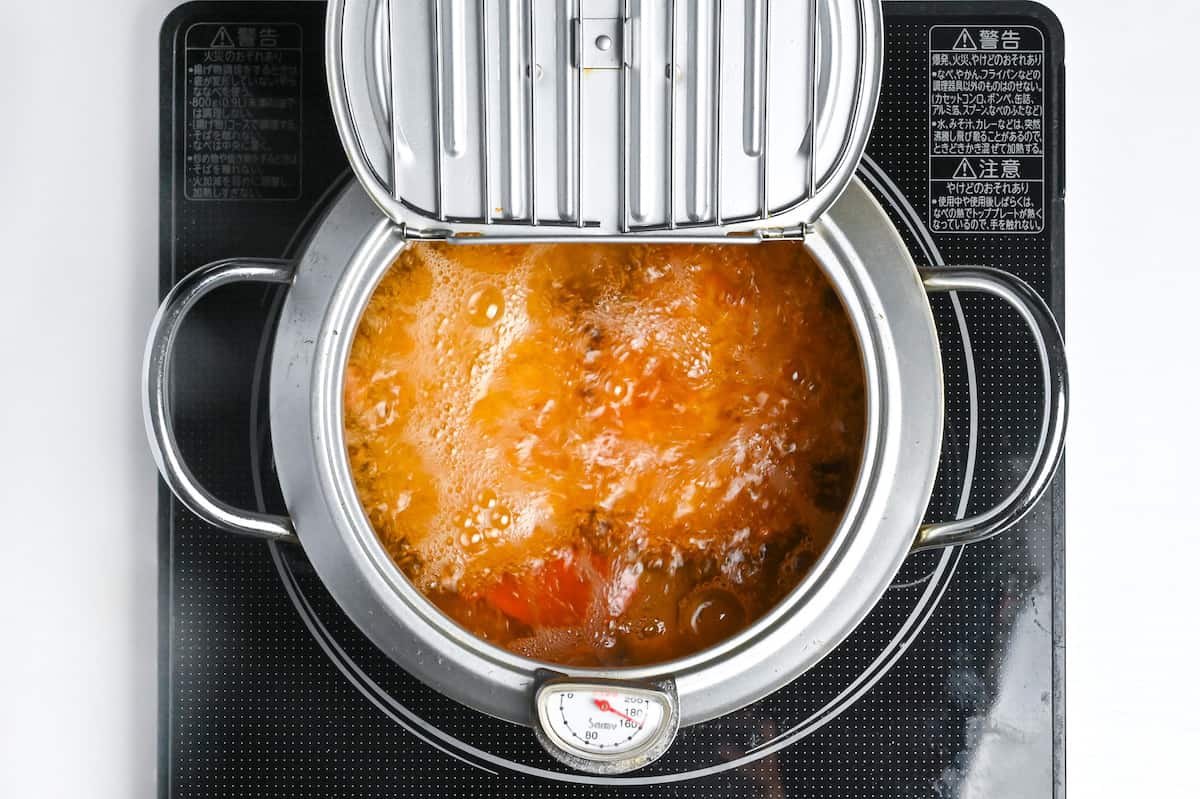
Once your oil is heated to the correct temperature, gently place the korokke into the oil.
To avoid greasy korokke, it’s essential to maintain the temperature of the oil. Avoid adding too many korokke at once, which can lower the heat.
Depending on the size of your pan, fry two or three korokke at a time. Be careful not to let them collide, as this may cause the batter to get scratched and panko breadcrumbs to fall off or the filling to burst.
While frying, avoid touching the korokke as it may cause the delicate batter to break. Only flip them once halfway through cooking.
Be especially careful not to touch them with chopsticks or tongs in the first few minutes of frying, as this may cause them to explode.
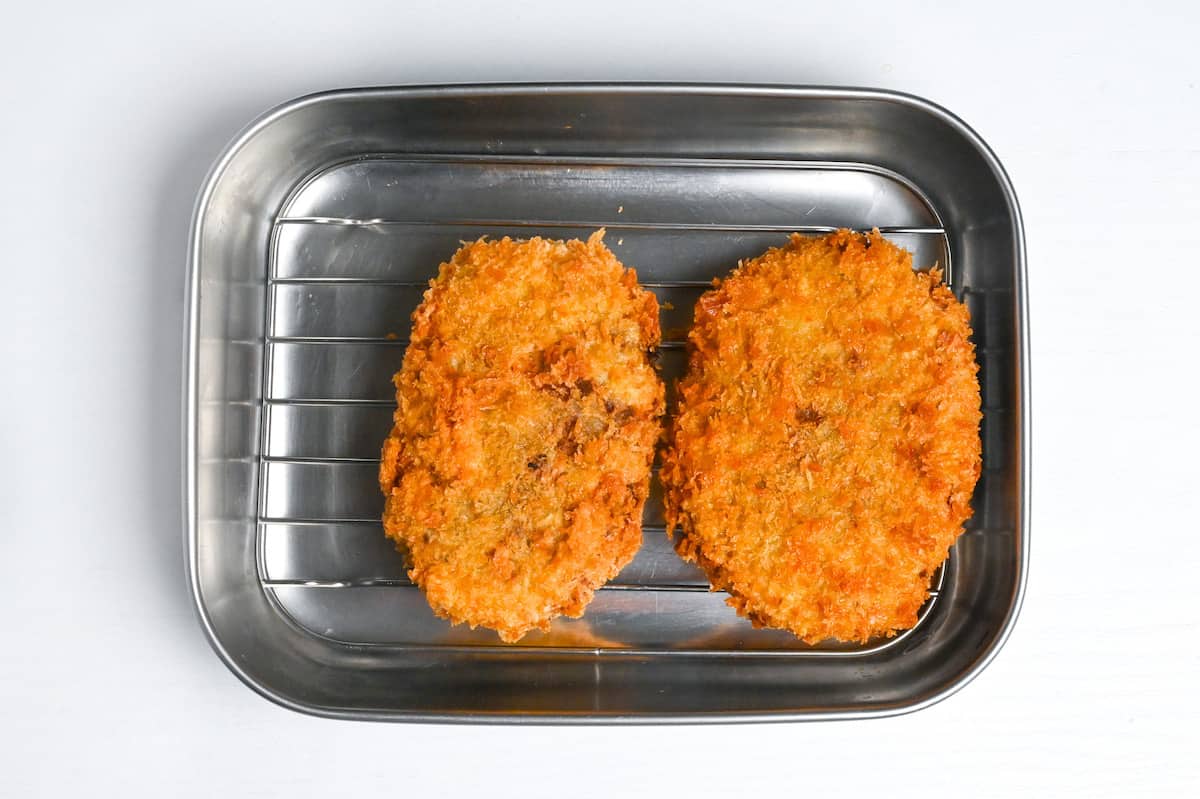
After they’ve turned a beautiful golden color, remove the korokke and let them rest on a wire rack. This allows any excess oil to drip off, ensuring they remain crispy.
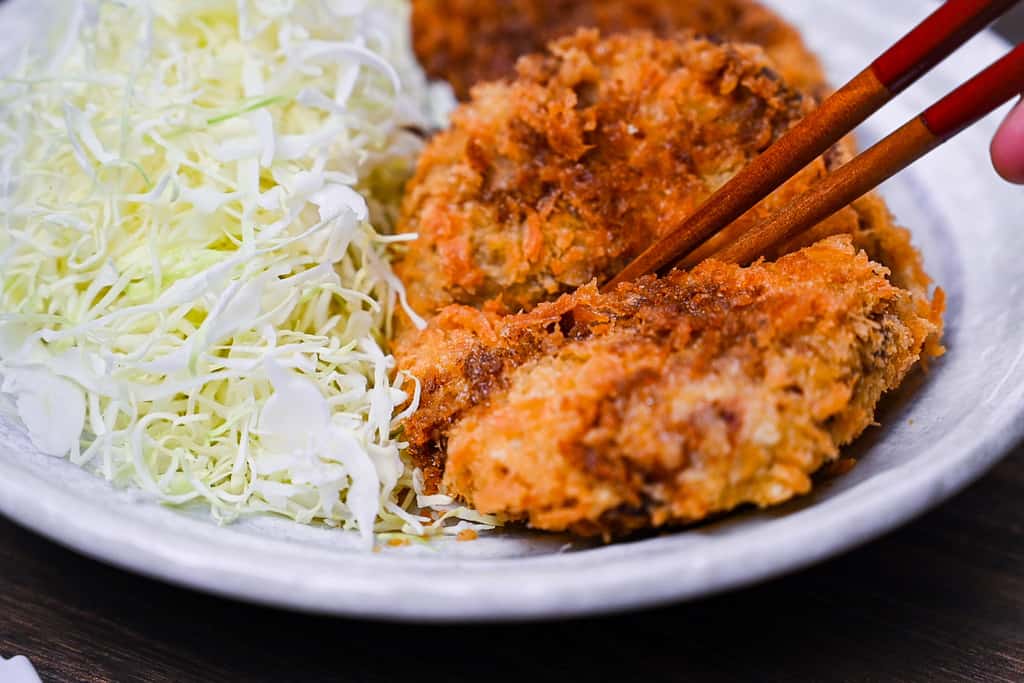
Plate up your korokke and give them a good drizzle of Worcestershire sauce. It adds a tangy kick that complements the korokke beautifully.
Jump to Full Recipe MeasurementsHow to Store
If you’re anything like me, making a large batch of something delicious is always tempting. And with croquettes, it’s no different.
In my experience, the best way to store Korokke is to freeze them right after shaping and coating them in breadcrumbs. Hold off on the frying part.
This way, whenever you’re in the mood for some crispy croquettes, just heat up the oil and fry them straight from the freezer.
When it comes to freezing, individually wrap each Korokke in plastic wrap, ensuring they’re snug but not squished. Then, lay them out on stainless steel trays, making sure they don’t overlap. Once frozen, they can be transferred to a sealable freezer bag to save space.
They can stay in your freezer, ready to be enjoyed, for up to 3 weeks.
Storage summary
Room temperature – Not recommended.
Refrigerated – Not recommended.
Frozen – Up to 3 weeks (before frying).
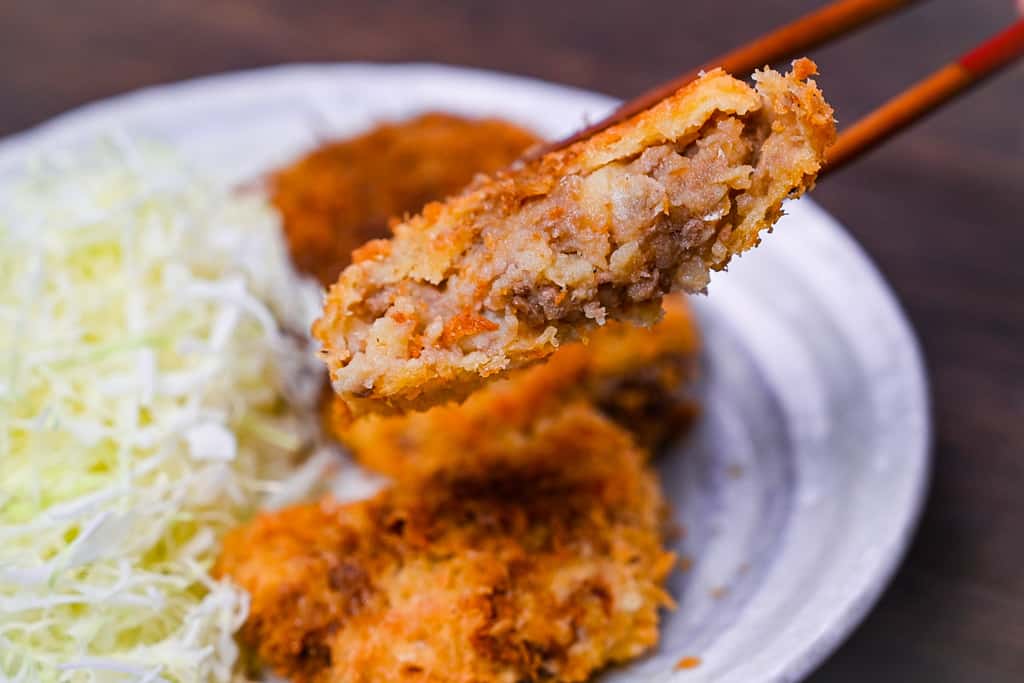
I hope you enjoy this Japanese Korokke recipe! If you try it out, I’d really appreciate it if you could spare a moment to let me know what you thought by giving a review and star rating in the comments below. It’s also helpful to share any adjustments you made to the recipe with our other readers. Thank you!
More Deep-Fried Japanese Recipes
- Mechi Katsu (Ground Beef Cutlet)
- Kani Kurimu Korokke (Crab Cream Croquette)
- Kabocha Korokke (Japanese Pumpkin Croquette)
- Ebi Furai (Deep Fried Shrimp with Panko)
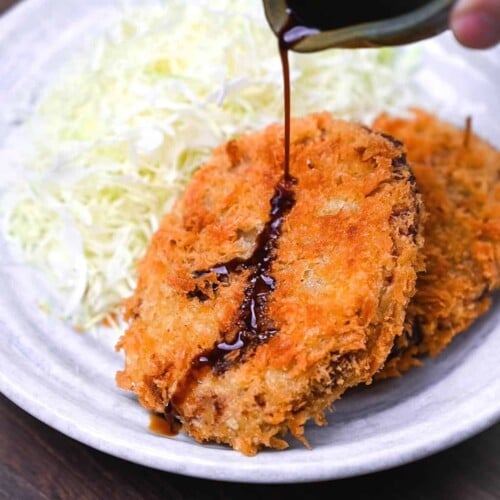
Korokke (Japanese Meat and Potato Croquette)
Ingredients
- 300 g potato washed and peeled
- ½ tbsp salt
- 15 g unsalted butter
- 100 g yellow onion finely diced
- 100 g ground beef
- 1 pinch salt and pepper
- 1 pinch nutmeg powder
- 1 ½ tbsp soy sauce
- 1 tsp sugar
- 2 tsp mirin
- 1 tbsp whole milk at room temperature
- 1 tsp Worcestershire sauce for serving
Batter
- 50 ml cold water
- 1 egg
- 5 tbsp all-purpose flour +extra for dusting
- 75 g panko breadcrumbs
- cooking oil for deep frying
Instructions
- Cut 300 g potato roughly into chunks (make sure they're about the same size) and add them to a pot of cold water. Add ½ tbsp salt and bring the water up to the boil, lower the heat to medium and cook until soft. (Pierce with a fork to test the doneness)

- While the potatoes are boiling, take a frying pan and heat it on medium. Add 15 g unsalted butter. Once melted, add 100 g yellow onion and cook until softened and slightly translucent. (Don't let them brown.)

- Add 100 g ground beef and fry until it's cooked through.

- Next, add 1 pinch salt and pepper and 1 pinch nutmeg powder.

- Mix well and then add 1 ½ tbsp soy sauce, 1 tsp sugar and 2 tsp mirin.

- Fry until the liquid is absorbed, then turn off the heat and set aside to cool slightly.

- Transfer your cooked potatoes to a large heatproof bowl and mash them with 1 tbsp whole milk .

- Once the potato is smooth, add the mince and mix until the ingredients are evenly distributed.

- Transfer the mixture to a wide, heatproof container and leave to cool. Once cool to the touch, place a lid or plastic wrap over the top and chill in the refrigerator for 30 minutes.

Coating and frying
- Preheat your oil to 180 °C (356 °F). While waiting for it to heat up, make a batter by mixing 50 ml cold water, 1 egg and 5 tbsp all-purpose flour together in a bowl.

- Prepare two plates, one with flour and one with 75 g panko breadcrumbs.

- Remove the filling from the fridge and divide into 4-6 pieces.

- Roll each piece into a flat oval shape.

- Coat the shaped korokke in plain flour, then the egg batter, then a generous coating of panko breadcrumbs.

- Place the korokke straight into the heated oil. I recommend cooking them in batches to avoid overcrowding the pan. (You can keep the other shaped korokke in the fridge/freezer while you wait for them to cook.)

- Once crispy and golden, transfer to a wire rack and rest for a few minutes to drain any excess oil.

- Serve with a drizzle of Worcestershire sauce and enjoy!
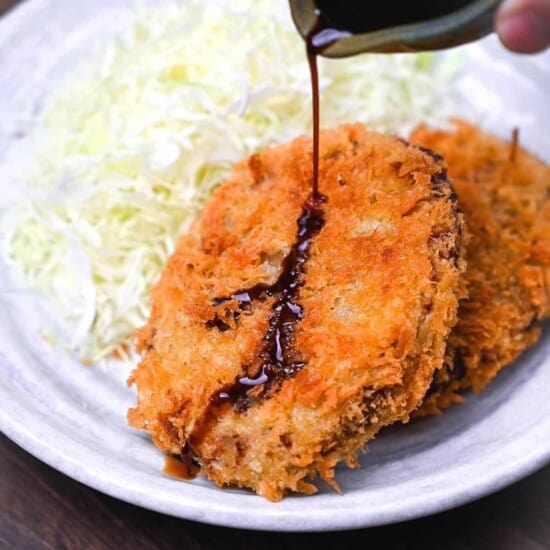



My husband who is from Japan recalled childhood with his granny in the home, and her warm korokke awaiting him as an afterschool snack. He was thrilled when we received a food processor as a marriage gift 45 years ago, and it had a cookbook that featured French croquettes. I think he would be equally excited if I were to use the authentic Japanese recipe.
Yes, korokke is a nostalgic food for many Japanese people. I hope you try the recipe and enjoy it with your husband! Thank you for your comment!